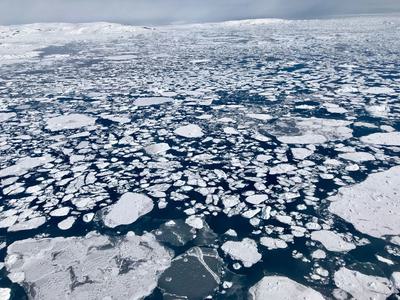Scientists have found that permafrost buried beneath the Arctic Ocean holds 60 billion tons of methane and 560 billion tons of organic carbon — making it a major source of greenhouse gases not currently included in climate projections that could have a significant impact on climate change in the longer-term.
The amount of carbon locked into submarine permafrost is more than humans have released into the atmosphere since the Industrial Revolution.
“It’s expected to be released over a long period of time, but it’s still a significant amount,” said Jennifer Frederick, a geosciences engineer at Sandia National Laboratories and a co-author of the new study, published in the journal Environmental Research Letters. “This expert assessment is bringing to light that we can’t just ignore it because it’s underwater, and we can’t see it. It’s lurking there, and it’s a potentially large source of carbon, particularly methane.”
The scientists say little is known about submarine permafrost and how it will react as oceans warm, sea levels rise, and meltwater alters Arctic ocean circulation patterns.
The study estimates that permafrost beneath the Arctic Ocean has been slowly thawing since the end of the last glacial period, some 14,000 years ago, in what scientists call a “natural response to deglaciation.” The frozen sediment and soil currently releases 140 million tons of carbon dioxide and 5.3 million tons of methane into the atmosphere each year — roughly equal to the yearly emissions of Spain. But the researchers said anthropogenic global warming will likely accelerate this greenhouse gas release, though they don’t know by how much because research into submarine permafrost is in such early stages. “The size of the research community doesn’t necessarily reflect its importance in the climate system,” Frederick said in a statement.



